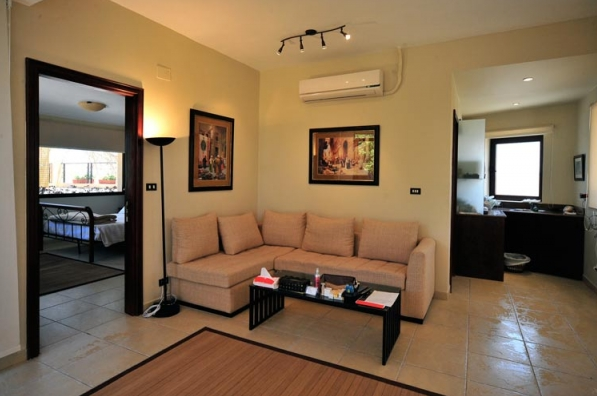In the last decade, the importance of mental health has been amplified around the world. Mental disorders have started becoming part of our daily conversations as we accept the reality of mental illness, and how fatal they can be. However, we seem to constantly fall short in representing the facilities that care for mental patients; psychiatric wards.
Despite the constantly improving portrayal of mental illness in film, the same cannot be said for psychiatric wards. It continues to be painted as a place for “crazy” people and tends to be a regular guest in horror and comedy movies. This means that victims are either weaponized or made into a joke. According to our most recent survey, most people saw the prominent genre where psych wards were to be seen to be horror, followed by comedy. In addition, 90% of our respondents deemed said depictions inefficient as well as disrespectful, with only a handful of exceptions in very recent movies and shows.
Now, how damaging can this misportrayal of mental hospitals be? In our day and age, where information is often in abundance, the lack of coverage on a topic decreases its credibility. This means that as we hear, read, and talk about psychiatric hospitals less and less, we’re practically erasing their existence from the minds of many. It creates a stigma around the concept of admitting a child or parent to a psych ward. This earns the wards the nickname they now have as “مستشفى المجانين”, which translates into “crazy people’s hospital”. The ignorance around the nature of psych wards, created by years and years of misrepresentation, has completely distorted our perception as a community.
What are Psychiatric Hospitals Actually Like?

At the Doors
Traditionally, there are two ways of admittance into a psychiatric hospital: voluntary and involuntary. The former is based on a conscious decision made by you or your family to seek professional help. It usually follows a few therapy sessions with one of the hospital’s specialists.
Meanwhile, involuntary admission only happens when a person is said to pose a serious threat to themselves or the people around them. Oftentimes, in these cases, the patient self-harms, has an eating disorder, is suffering from addiction or has suicidal tendencies. Following admittance, the patient is taken to the ER section of the hospital where they are physically treated for any injuries and have their vitals checked. After that, they are assigned to their room.
Hospitality
Most hospitals have floors, or sections, for each age group or type of disorder. For example, it could be more beneficial for people recovering from a drug addiction to be around other people who are recovering from the same thing. Depending on the type of establishment a person is admitted into, public or private, they’ll either be admitted into a room alone or with the company of roommates. Public hospitals are notorious for grouping more patients than advised into wards, due to a lack of funding. Meanwhile, in most private institutions, patients can be admitted into suites (some ridiculously luxurious), single, double or triple rooms. Regardless of how luxurious a room is, rooms don’t have any potentially harmful objects (sharp objects, removable mirrors, etc.) and have surveillance.
There’s usually a psychological clinic in the hospital, as well as meditative rooms and other areas for different forms of therapy, neurological labs and lots of green areas. The interior design is mostly simple and often consists of bright colours.
Treatment
Depending on the hospital, the disorder and its severity, the ward will assign patients with a schedule unique to their needs, which consists of therapy sessions, psychiatrist visits, group therapy, art therapy, sports therapy, brain scans and some recreational activities. Despite media portrayals, the staff is actually professional, well-trained and empathetic. They provide excellent care for the inwards. However, there are certain aspects of their job that cause patients to resent them – such as the 24/7 surveillance.
Patients are also allowed some personal leisure time and even phone time. This depends on how much social media affects their condition, that helps normalise their environment at the ward.
Constantly meeting with a psychiatrist and getting brain scans allows specialists to evaluate patients’ progress during their time at the ward until they are deemed well enough to return to their homes.
Out in the World
When a patient seems to be well or is nearing wellness, they meet with their psychiatrist, who assesses their progress to decide whether they are to be released, or are put on close-watch for another 48-hours.
If a patient is to be released, the psychiatric hospital organises a meeting with them, their family and a psychiatrist to discuss the steps following their release in terms of care, medical treatment, education/work and regular psychiatrist visits. These steps to ensure former patients are still on the recovery road are as essential as their inward time, if not more, as they are a crucial step in a person’s rehabilitation.
Trigger Warning: This video contains vivid mentions of addiction, self-harm, suicide, and bulimia and could be unsafe for some viewers.
Mental wards in the MENA region are far from what we see in movies like the Blue Elephant, with padded rooms and possessed patients.
Many of them are quite pleasant, with lots of green areas and tranquil scenery. In fact, private institutions like The Behman Hospital are developed, providing top-notch care to those who have the fund to pay for psychiatric care.

Public facilities, on the other hand, tend to fall a bit short, the expected outcome of terribly poor funding. This is why it is essential that we, as MENA citizens who care about mental health, take conscious steps towards better mental care that is available to the public, by signing petitions, donating and making these institutions visible through our conversations.
⚡️If you like this article, subscribe here to our EMPWR Guide and be first to receive all our latest articles surrounding mental health in the MENA Region, directly to your inbox, every Sunday.
Be sure to check out and join our global conversation around mental health on EMPWR’s Facebook Community Group!
💭Freelance Submissions & Art/Poetry are accepted here (All articles must comply with EMPWR’s writing guidelines for consideration.)







